Elmwood Cemetery is the oldest continuously operating, non-denominational cemetery in Detroit. The cemetery was established in 1846 and incorporated in 1849 as a non-profit corporation by an act of the Michigan Legislature. Founded by some of early Detroit’s leading citizens, Elmwood quickly expanded from its original 42 acres to its current size of 86 acres and became the final resting-place of tycoon and laborer alike. Many of St. Paul’s members are buried there and I always enjoy researching the family when a familiar name is spotted.
Major John Biddle
John Biddle was born in Philadelphia in March 1792 to a prominent American family. He was the son of Charles Biddle, Vice President of Pennsylvania during the Revolutionary War and nephew of Commodore Nicholas Biddle who later became President of the United States Bank. A brother, Major Thomas Biddle, served in the U. S. Army and another brother, Commodore James Biddle, was a noted Naval officer.
A few years after graduation from Princeton College, John Biddle entered the United States Army, serving for most of the War of 1812 in the Niagara Frontier under General Scott. He was promoted from Captain of Artillery to Major. While in the military, he was assigned to Fort Shelby in Detroit as Commander. In 1821, Biddle left the Army and was appointed Indian Agent at Green Bay.
After returning to the East and finding a bride, Eliza F. Bradish of New York, John Biddle began the political phase of his life becoming prominent in affairs connected with the Territory, the State of Michigan and the City of Detroit. His political accomplishments were impressive. In 1820, he was appointed Associate Justice of County Court, Judge of Probate and Brown County Commissioner. From 1823 to 1837, he served as Register of the Land Office for the District of Detroit, selling farms and lots to new arrivals. From 1827 to 1828, he served as the Mayor of the City of Detroit. From 1829 through 1831, he was the Territorial Delegate to Congress from the State of Michigan. In 1835, he was a member of the Constitutional Convention and President of the first State Constitutional Convention. In 1841, he served in the State Legislature.
In addition to his military and political achievements, Biddle was a civic and cultural community leader. In 1835, he was elected President of the Detroit-St. Joseph Railroad which later became Michigan Central Railroad. Three years later, he became the first President of Farmers’ and Mechanics’ Bank having served as Director from 1829 through 1838.
Biddle displayed an interest in the general religious and philanthropic reforms of his time. He was a member and vestryman of St. Paul’s Episcopal Cathedral (incorrect information as the Cathedral was not formed til after his death) and became personally responsible for the expense of St. Paul’s first building. He helped organize the Episcopal Church Society in Detroit on March 8, 1825 and, on November 3, 1830, was elected Vice President of the County Bible Society which distributed Bibles and Testaments.
On July 15, 1831, he was elected Vice President of the Detroit Athenaeum which was established as a club reading room. His was the first name on a notice list of the Association for Promoting Female Education in the City of Detroit (December 4, 1834) and elected as a Trustee of the University of Michigan, an “English Classical School”. The Historical Society of Michigan was organized on July 3, 1828 at Mansion House and Biddle was asked to be the first Vice President (1828–1837). In 1837, he was elected President of the Society. His lecture of September 15, 1830 can be found in the book “Historical and Scientific Sketches of Michigan”. Biddle helped organize and participated in plays which were given in an amateur theater located in the upper part of a large brick storefront at the foot of Wayne Street.
For the people of southeastern Michigan, this man of so many accomplishments is perhaps best noted for his connection to the City of Wyandotte. Land on which the Village of Maquaqua had previously been located was auctioned off in 1818. Biddle acquired 2,200 acres and proceeded to construct his summer estate where he could retreat from Detroit and entertain. The buildings were completed in 1835 and the estate was named “The Wyandotte” after the Indian tribe that had lived on the land. The family moved there from Detroit a year later.
The white colonial-style home was built on the corner of Vinewood and Biddle on the land presently occupied by the McNichol-Ford House (Wyandotte Historical Museum). The front lawn, filled with flowers, went to the road running along the riverbank. It is reported that runaway slaves escaping to Canada and Wyandotte Indians were used for farm labor.
A lack of interest in farming led to the sale of “The Wyandotte” and Major Biddle and his wife left the area to return to his old home in Philadelphia. The property was sold for $44,000 in 1853 to Eber Ward of Eureka Iron and developed into the town of Wyandotte. The house was used as a hotel (some accounts say used as a carriage stop) for the workingmen of the village. A fire partially destroyed the house in 1860. It was moved in 1896 to its present location at 2114 Biddle, the second house south of Spruce. Some changes were made but many original beams and structural details remain.
After selling the property, Biddle went to Paris for a retirement vacation. His wife’s ill health prompted a trip to White Sulphur Springs, Virginia in 1859. He died there on August 25, 1859. Survivors were listed as four “recorded” children: William S., Major James, Edward J. and Margaretta.
Source https://en.wikipedia.org/wiki/John_Biddle_(Michigan_politician)


Born: 1792
Died: 1859
Buried: Elmwood Cemetery, Section F, Lot 47



